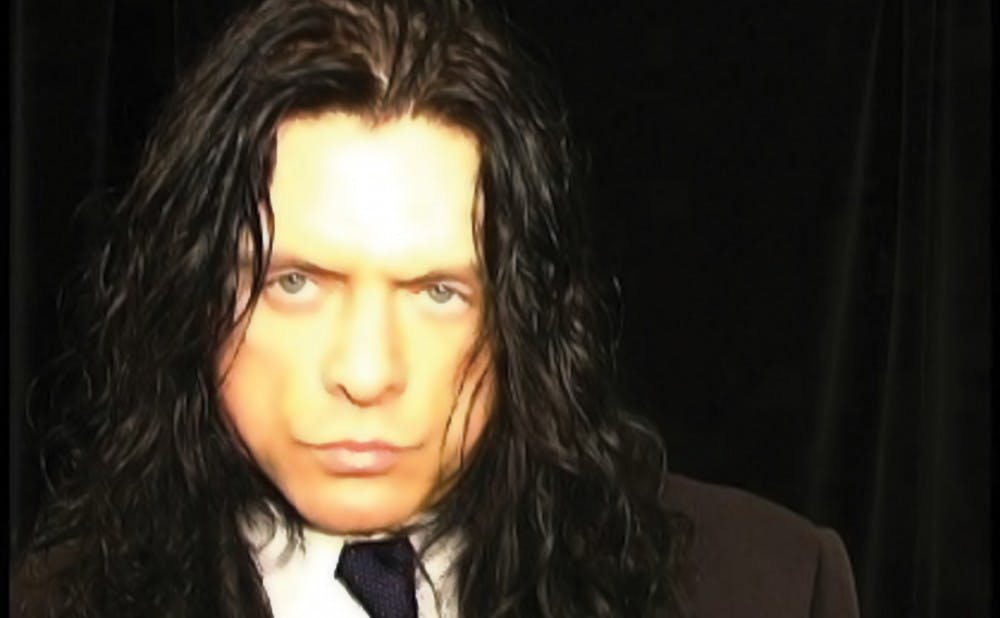Tommy Wiseau’s 2003 film “The Room” went from box office flop to profitable cult classic within just a year of its premiere. Dubbed the “best worst movie ever made,” “The Room” continues to captivate audiences at midnight screenings. Fast forward 14 years to James Franco’s Golden Globe-nominated film “The Disaster Artist,” which permits viewers to examine how Hollywood’s most infamous film came to be. The film is largely based on “The Disaster Artist: My Life Inside The Room,” written by one of “The Room”’s lead actors Greg Sestero.
Wiseau, portrayed by James Franco himself, retains a mysterious aura — although claiming to have grown up in the “bayou” of New Orleans, his heavy (Eastern European?) accent seems to suggest otherwise. Franco nails the impression; his investment in the “character” of Tommy Wiseau is as clear as his convincing impression of Wiseau’s accent and stringy black hair, bearing a stark resemblance to the writer-director-producer himself. His efforts earned him both a Golden Globe for Best Actor and a helping of controversy this past Sunday.
Conversely, Dave Franco’s interpretation of Greg Sestero seems flat and rather unconvincing,as if Dave is playing himself rather than Sestero. That said, (Dave) Franco’s performance does culminate in a solid conclusion as Sestero and Wiseau’s friendship becomes strained after production of “The Room” and in his reluctant but comforting presence at the premiere.
Although “The Disaster Artist” is branded as a comedy and supplies enough genuine laughter to maintain that status, the film is striking for its poignancy. Aspects of Wiseau’s quirky personality may be comical to audiences, but perhaps that is attributed to an inability to accept personalities that deviate from the norm. Wiseau is a complex character in the scope of the film — he retains insecurities regarding his limited friendships and Hollywood ridicules him, withholding its acceptance.
To be clear, I thoroughly enjoyed the film upon the first viewing. The film was hilarious, emotional and (mostly) well-acted. Notable appearances from Seth Rogen (script supervisor Sandy), Zac Efron (Chris-R), and Josh Hutcherson (Denny) made for an amusing novelty. But, there was a bit of a nagging feeling in the back of my mind that something wasn’t right. After some meditation on “The Disaster Artist,” I pinpointed the film’s shortcoming on the shallow portrayal of Wiseau’s character.
Wiseau’s clingy, controlling nature and brash mistreatment of his cast and crew easily vilifies the mysterious figure. Perhaps this vilification coupled with Franco’s over-eager impression creates false justification for making Wiseau an object of ridicule, as it is easy to overlook the causes of this behavior. Where the film lacks is in its failure to explore and meditate upon the perceived flaws of Wiseau’s personality — the fact that he is very protective of his friendship with Sestero and that he is afraid of betrayal and abandonment can likely be attributed to unknown occurrences in his past.
Don’t get me wrong, many of the actions of Wiseau are inexcusable, including the shocking treatment of Juliette Danielle (Lisa) during the “lovemaking” scene and lack of empathy towards a suffering cast and crew. Yet Franco took the simple route, opting for humor rather than probing at the underlying implications of Wiseau’s behavior, generating a collective cringe among the audience.
Wiseau throws the word “betrayal” around ad infinitum (“Why you all betray me,” “Greg you betray me,” etc.), with the perception that he is constantly surrounded by potential Judases. “The Disaster Artist” makes clear distinctions between Wiseau’s issues with Hollywood and their translation into “The Room” (Mark and Lisa’s betrayal of Johnny) and the dynamic of Greg and Tommy’s friendship portrayed in the film is both touching and heartbreaking, but the development and intricacy of their friendship seem to be a hollow afterthought in Franco’s vision of painting Wiseau as an over-the-top laughing stock.
“The Disaster Artist” does break the enigmatic atmosphere that surrounded “The Room,” allowing some perspective as to why and how the movie came to be. As a director, Franco has a way with the camera and capturing the essence of what is essentially two friends trying to make it in showbiz in the late nineties. “The Disaster Artist” isn’t an impeccable film, but it is a clear achievement on Franco’s part as both a director and actor and well deserving of a position in the awards circuit.
Get The Chronicle straight to your inbox
Signup for our weekly newsletter. Cancel at any time.

